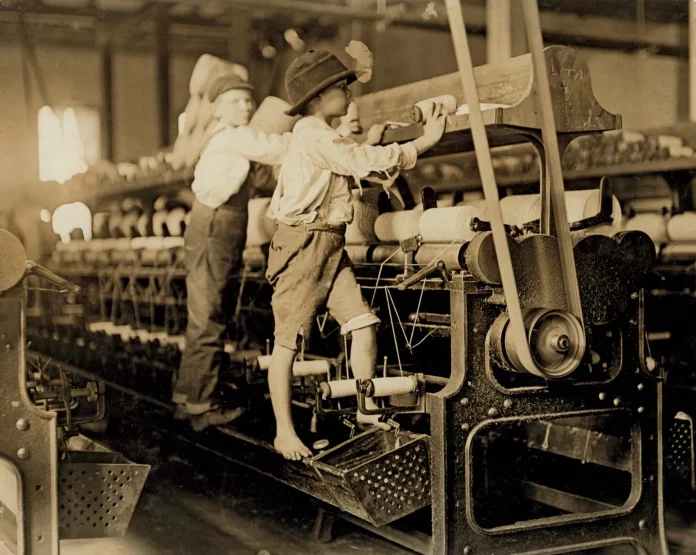The British Industrial Revolution was a period of rapid industrialization and technological innovation that transformed the British economy and society. It led to the creation of new industries, such as textiles, iron, and coal mining, and increased production and efficiency in existing ones. However, this economic growth came at a great cost, particularly for children.
Causes of Child Labor
The causes of child labor during the British Industrial Revolution were varied and complex. One major factor was the demand for cheap labor in factories, particularly in the textile industry. Children were seen as ideal workers, as they were small, could be paid less than adults, and were considered easier to control.
Another factor was the poverty and overcrowding that characterized many urban areas during this period. Families often had large numbers of children and struggled to make ends meet, which led to the need for children to contribute to the family income.
Consequences of Child Labor
The consequences of child labor during the British Industrial Revolution were dire. Children were forced to work long hours in dangerous and unsanitary conditions, often for very little pay. They were exposed to toxic chemicals, dust, and fumes, which led to high rates of respiratory disease and other health problems. Many children were injured or killed while working, particularly in the textile industry, where accidents with machinery were common.
Child labor also had a profound impact on children’s education and social development. Many children were unable to attend school or had to drop out in order to work. This deprived them of the opportunity to learn basic skills and acquire knowledge that would have been essential for their future success.
The Fight Against Child Labor
Despite the many challenges, there were individuals and organizations who fought against child labor during the British Industrial Revolution. One such person was Lord Shaftesbury, who led the charge for reforms in Parliament. In 1833, the government passed the Factory Act, which limited the working hours of children in textile mills to 9 hours a day and required them to attend school for 2 hours a day.
Further legislation was passed in subsequent years, including the Mines Act of 1842, which prohibited the employment of women and children in underground mines, and the Ten Hours Act of 1847, which reduced the maximum working hours for women and children in factories to 10 hours a day.
Abolition of Child Labor
The abolition of child labor during the British Industrial Revolution was a gradual process that took many years. Despite the passage of legislation, the problem persisted, and it wasn’t until the late 19th and early 20th centuries that child labor was finally eradicated in the UK.
One factor that contributed to this was the rise of trade unions and the collective bargaining power that workers gained through organized labor. As workers began to demand better wages and working conditions, employers were forced to reconsider their use of child labor.
Related Articles
- Too Many Nigerian Women, Children are Dying
- Six Surprising Reasons Why Children in Nigeria Don’t Attend School
- Effective Ways to Educate Girls And End Child Marriage
Another factor was the growing awareness among the general public about the plight of working-class children. Books such as Charles Dickens’ “Oliver Twist” and Elizabeth Barrett Browning’s “The Cry of the Children” brought attention to the issue and galvanized public support for reform.
Child labor during the British Industrial Revolution was a dark chapter in the country’s history, but it ultimately led to significant reforms and improvements in working conditions.
